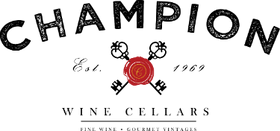Description
From: Emilia-Romagna, Italy
Varietal: Lambrusco Salamino
Taste: This Lambrusco della’Emilia from Emilia-Romagna, Italy, offers a vibrant deep red color, showcasing its fine perlage. The nose is filled with intense notes of ripe fruits, including cherries, sour cherries, and blackberries, accompanied by floral scents that add complexity and depth. On the palate, this Lambrusco Salamino is pleasantly delicate, with good and balanced acidity. It is fresh and easy to drink, offering a slightly tannic and sweet profile. The gentle effervescence adds to the overall experience, making this wine an ideal choice for various occasions.
Pairing: The Paltrinieri Solco NV Lambrusco della'Emilia 100% Salomino pairs well with a range of dishes and flavors, making it a versatile wine for various occasions. In general, charcuterie, pizza, and pasta dishes with rich tomato-based sauces are excellent choices (see recipe below). This wine also complements grilled vegetables, risotto, and cheese plates.
As stated above, Lambrusco is an incredibly versatile food wine, but as with most wines from a specific region, “what grows together goes together”- Emilia-Romagna, the home of salami, prosciutto, mortadella, bresaola Bolognese Ragu, tortellini, ravioli, cannelloni and PIZZA!
Fried Tagliatelle With Chickpeas and Smoky Tomatoes
By Yotam Ottolenghi
There's nothing more festive than a sparkling red.
"According to the sommeliers we spoke with, Lambrusco is one of the best wines to pour for a holiday toast or to sip alongside a six-course meal." - Food & Wine
At a Glance:
Historic, benchmark producer in the Lambrusco di Sorbara DOC
Known for elegant, focused and nuanced Lambrusco
Family-run since 1926
About. Paltrinieri is located in the heart of the Sorbara DOC by the historic Cru of Cristo di Sorbara. Since 1998, the estate has been run by the fourth generation Alberto Paltrinieri and his wife, Barbara, though the estate was founded in 1926 by Alberto’s grandfather, Achille. Historically the winery, as was the tradition, produced Lambruschi that were blends of grapes. Since Alberto Paltrinieri took the reins of the estate they began, more and more, to focus on mono-varietal wines from the Lambrusco di Sorbara grape which was gaining more and more recognition for its elegance and complexity compare do the many other Lambrusco varieties. Currently they produce eight different bottlings – all made from 100% Lambrusco di Sorbara save the Solco which is 100% Salamino, a grape that producers a more fruit-forward style of Lambrusco with a darker color compared to the Sorbara.
The estate is made up of 17 hectares of vineyards. The Sorbara zone lies between the Panaro and Secchia rivers and the soil is mainly sandy and loose though towards the fringes of the zone there is more clay and there the wines tend to be deeper in color. Their Lambrusco di Sorbara bottlings tend to be dry with light color and crisp acidity. Examples include the Leclisse, which is a single cru wine from their oldest vineyards in the Cristo subzone, as well as Radice, which is also from the Cristo zone but is bottle-fermented with indigenous yeast and left undisgorged (hipster alert!).
As the writer Ian d’Agata says of Paltrinieri: “…in my opinion the best producer of Lambrusco di Sorbara today.” (Vinous, Jan 2018).
This wine, vineyard. Sourced from 15 hectares of vines at the cru of ‘Cristo’ di Sorbara. Sorbara is the most suitable area for the production of this vine as it is the narrowest strip of land between the two rivers Secchia and Panaro that run through the province of Modena.
Viticulture. Hand-harvested. Regarding farming practices, the winery says, "I would call it sustainable. In good years they are organic and just using a little copper sulf. in accordance with the organic ruling in Europe. However, for really difficult vintages they may have to fall back on some higher QTYs of copper sulf. ...In the last 10 years they only had 2 vintages that were challenging in this way."
Vinification. Macerated in contact with the skins for two days. Alcoholic fermentation and refermentation using the Martinotti (aka Charmat) method.
Aging. Aged briefly in the bottle before its release.
Notes. To obtain the use of the Lambrusco di Sorbara denomination for their other wines, the winery had to plant 33% of their vines to the Lambrusco Salamino variety. Since they wanted most of their wines to be 100% Lambrusco di Sorbara variety, they decided to make an additional wine that was 100% Lambrusco Salamino variety. "Solco" translates to "furrow" and signifies to them the idea of leaving a mark after having done someting positive.

